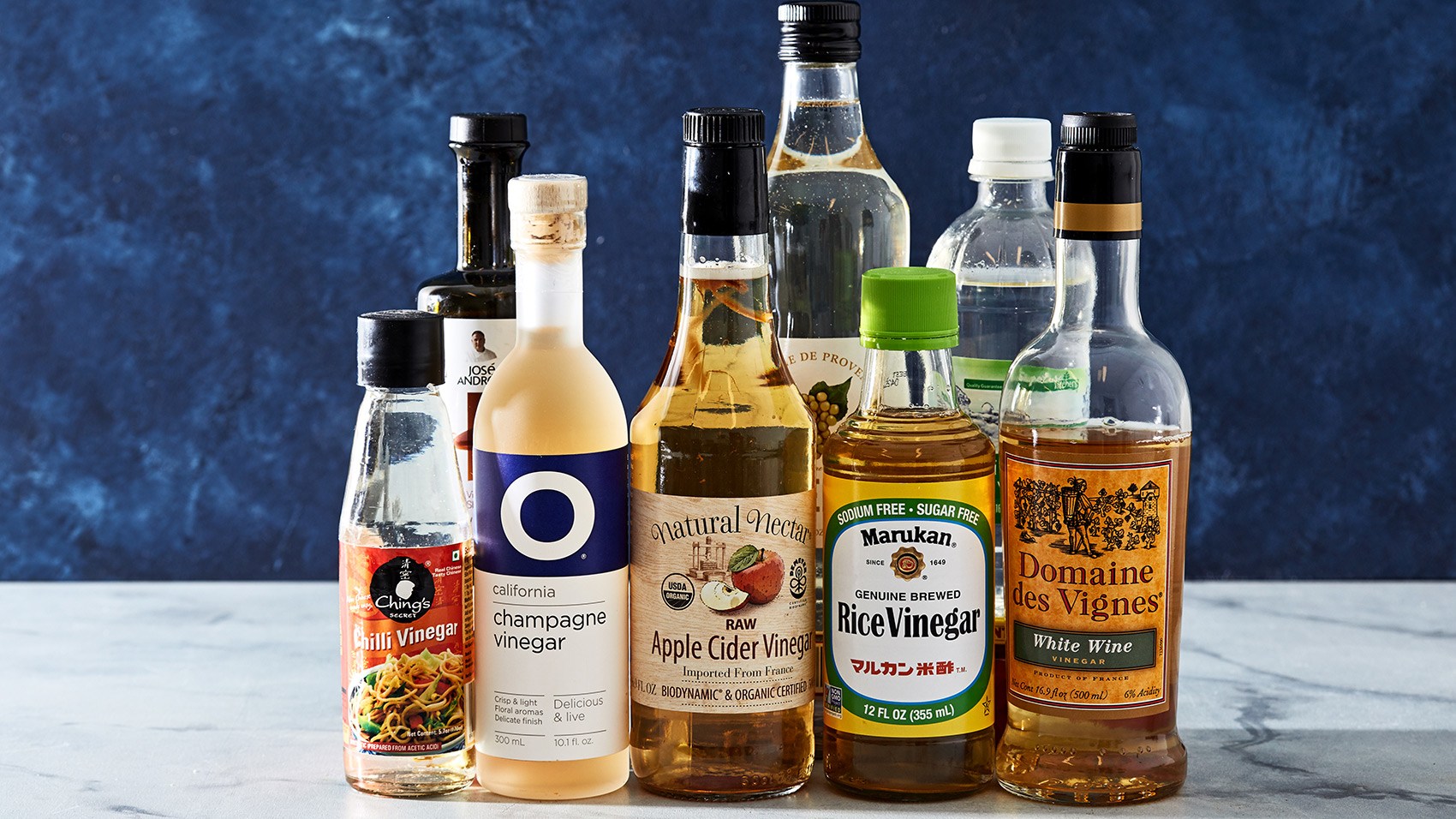When we think of vinegar, we probably have the harsh smelling white vinegar in mind, that we do not know what to do with most of the times. In fact, Vinegar has a plenty of properties, and multiple use that are perfect at home, in the kitchen, in the bathroom, for cosmetic use or in the garden. Did you know that? If not, do not worry, here I come in, with the bunch of advice from the Lady of the house, to make running the house a little bit smoother.
Vinegar is a universal product with many different uses. It has been known for ages, but often not fully appreciated. Here are some of my suggestions.
Vinegar has been known for five thousand years. Due to its properties, it was used in antiquity for disinfecting hands and for water treatment. In Babylon, it was made from dates to preserve food and add its unique flavor. In Greece, health-promoting apple cider vinegar was prepared. The Romans, on the other hand, commonly used wine vinegar. An interesting fact is that in ancient times, hot vinegar was used in mines to split rocks.
Today we use vinegar to acidify and preserve food products, but we use it in households not only in the kitchen. Vinegar is used as an eco-friendly cleaning agent for a variety of surfaces, which is great for removing a lot of dirt. Vinegar has antiseptic, bactericidal and antifungal properties. It can be used to treat inflammation of the throat, ear, and gums. A small amount of vinegar improves the appetite, thanks to the pectin content, vinegar helps in the digestion of hard-to-digest foods. Store the vinegar in a shaded place at room temperature. It cannot be poured into metal containers because it reacts with them.
What exactly is vinegar and how is it made…?
Vinegar (Latin acetum) is produced by the natural acetic fermentation of alcohol, during which acetic acid bacteria convert the alcohol into acetic acid. The popular vinegar is an aqueous acetic acid solution with a concentration of up to 10%. Its aroma and taste depend on the alcohol used in its production. It is distinguished by a pungent smell and a sour taste. The name “vinegar” in many languages refers to the French word vinaigre, which means sour wine.
The most popular types of vinegar

- Malt vinegar – strongly sour vinegar common on the British Isles with a beer aftertaste. It is produced from barley malt and beech shavings. Malt vinegar contains 4-5% acid, in England it is used for sprinkling a popular dish – fish and chips, and for pickling vegetables and meats.
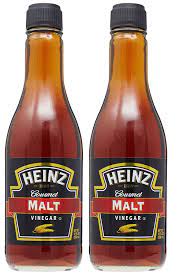
- White vinegar – the cheapest and the worst in quality. It is made from diluted ethyl alcohol (beet or potato derived), which produces acetic acid. This vinegar has a very pungent taste, suitable only for marinades and as a cleaning and disinfecting agent.
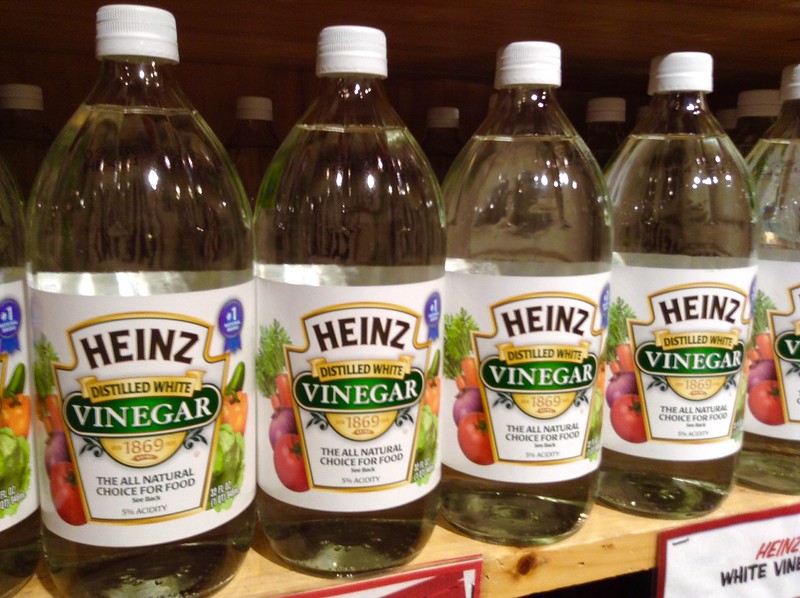
- Apple cider vinegar – has a natural, slightly apple flavor, is not very sour, and goes well with many different dishes. It is used to acidify borscht and as an addition to salads and salads. It supports the proper functioning of the body, positively influencing the nervous, immune, digestive, and circulatory systems. It contains min. vitamins A, C, E, P, B group vitamins and minerals (iron, copper, silicon, potassium, magnesium), lactic acid, enzymes, and amino acids.
- It works well in cleansing the body of toxins and helps in weight loss.

- Wine Vinegar – A popular vinegar used in kitchens around the world. Its color depends on the wine it was made of (white or red). Less common vinegars are Sherry and Rose. It is a great addition to salads and pickles. White wine vinegar is the basis for the preparation of flavored vinegars, e.g., thyme, basil, or garlic vinegar.
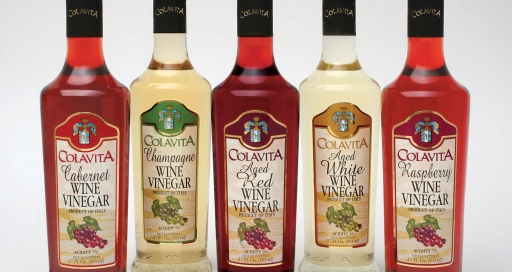
- Rice vinegar – comes from Asia, it is obtained from the fermentation of sake rice wine. It has a delicate, slightly sweet taste, it is an ideal addition to sweet and sour dishes, salads, and sushi. There are rice vinegar komesu (light), kurosu (dark) and kazusu (red).
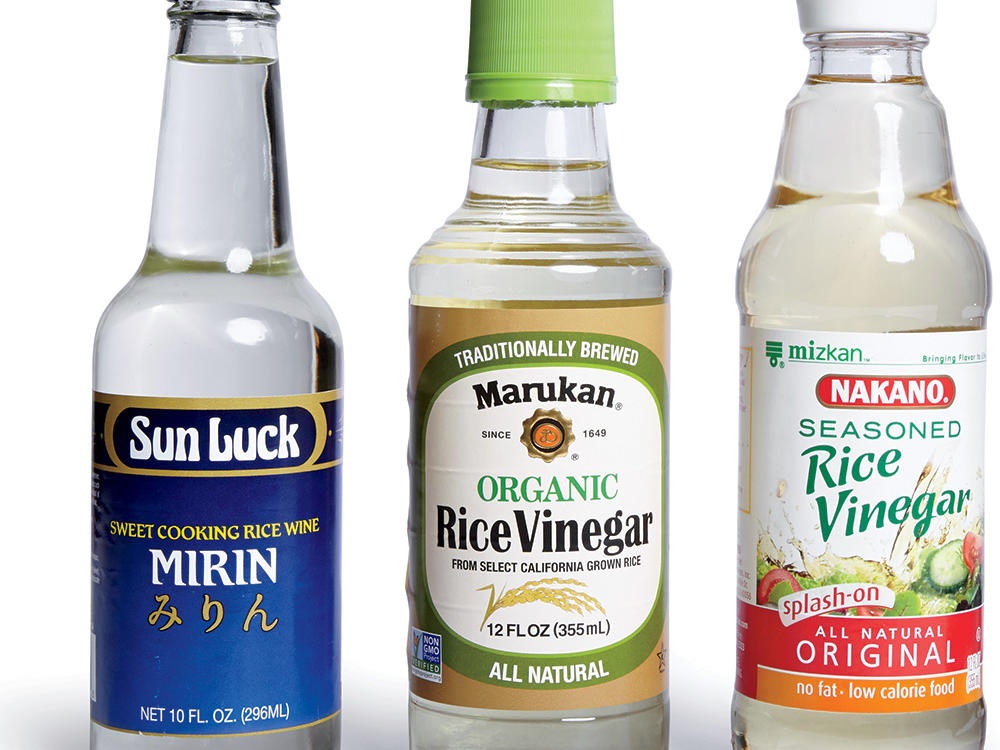
- Balsamic vinegar – the original balsamic vinegar is made from grape must age in wooden barrels for several years. It is the most expensive vinegar in the world. During its production, alcoholic and acetic fermentation occur simultaneously, and not one after the other. Cheap, mass-produced balsamic vinegars are made from less concentrated juice and colored with caramel.
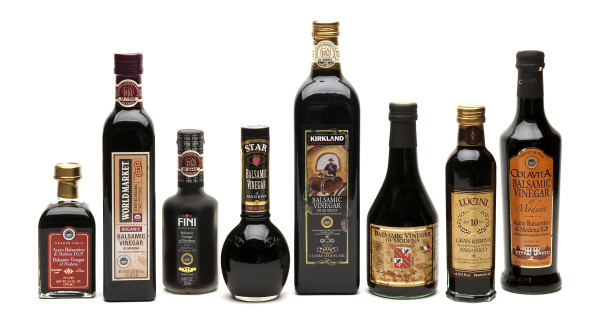
Usage of vinegar in the house – for cleaning:
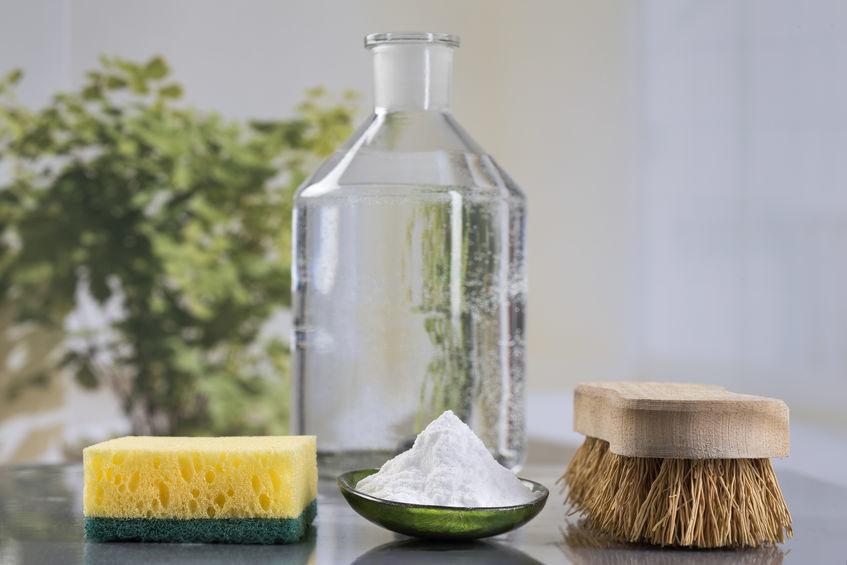
Cleaning various appliances and surfaces – we can use vinegar to clean the refrigerator, cutting board, kitchen countertops, fittings, tiles, mirrors, and furniture. For heavy stains, use only vinegar, for lighter stains, use a 50/50 solution of vinegar with water. We get an additional antibacterial effect by adding a few drops of tea oil to the solution. To make it easier to apply the solution to washed surfaces, let us pour it into a bottle with an atomizer.
Removing the sediment from the heating element in an electric kettle – prepare a 1: 1 solution of vinegar and water in the kettle and boil it. Then wash and rinse the kettle well.
Disinfecting the washing machine, removing limescale from the heater – pour the vinegar solution into the powder drawer and wash it at 95 degrees.
Removing limescale from the toilet – put three tablespoons of baking soda into the toilet, three tablespoons of table salt and pour half a glass of white vinegar into the toilet. Wait for about half an hour and rinse with two glasses of hot water. You can also prepare such a mixture in a separate container and apply it with a brush to hard-to-reach places on the toilet seat.
Cleaning the shower cabin – prepare a solution of white vinegar with warm water in the proportion of 1: 1. Apply the solution with a sponge on the surface and leave it for 10 minutes. Try not to spray such a solution as it may irritate our respiratory tract. Then, thoroughly wash the dirt and rinse the shower cubicle with clean water. The preparation can be used to remove sediment from tiles in the bathroom, cleaning mirrors and window panes.
Cleaning the shower head – unscrew the shower head and place it in a solution of hot water mixed with a glass of vinegar for 15 minutes.
Cleaning other surfaces heavily covered with limescale – wrap the surface with a cloth soaked in vinegar and leave it for several hours. Finally, rinse everything with water.
Removal of unpleasant odors – unpleasant odors from the room (e.g., burning) can be eliminated by boiling a solution of water with vinegar (2: 1) in a pot until it evaporates completely.
Cleaning the microwave oven – Pour 1/4 of the vinegar into a glass and fill it with water. Put the glass in the microwave for 5 minutes on the highest temperature. Once the solution has cooled down, use it to clean the inside of the oven with a cloth.
Washing the thermos – prepare a 4: 1 solution of warm water with vinegar, add a few grains of rice to it, pour it into the thermos, shake it vigorously and leave it for a few hours. Then rinse the thermos flask thoroughly with cold water.
Removing salt stains on shoes – prepare a 1: 1 solution of water with vinegar, wipe the shoes with a cloth soaked in this solution.
Cleaning and refreshing paneling and other wooden surfaces – prepare a mixture: 4 tablespoons of vinegar, 2 tablespoons of warm water and 2 tablespoons of olive oil. Put it on a cloth and wipe the surfaces with the mixture until they regain their glow. Finally, polish the wood with a dry cloth.
Cleaning the grout – we use an old toothbrush. Dip it in vinegar and gently scrub the grout between any tiles . Finally, rinse the surface with water.
Softening light fabrics, antiseptic action, preventing static electricity and dyeing clothes – before starting the washing machine, add a glass of vinegar to the fabric softener drawer.
Removing yellow stains from clothes – soak the laundry in a solution of water with 1/12-part vinegar and leave it overnight. The next day, wash your clothes as usual.
Removing stickers – prepare a piece of cotton wool, soak it in vinegar and hold it for a few minutes on the sticker. Then remove it gently.
Unblocking clogged pipes – a home way to remove a clogged drain would be to pour a solution of water, baking soda with vinegar into it and leave it for a few minutes and then rinse with hot water.
Washing the dishwasher, removing unpleasant odors – pour a glass of vinegar at the bottom of the dishwasher, pour a tablespoon of baking soda into the tablet container. Run the longest washing program. However, remember to check whether the manufacturer of the equipment allows the use of vinegar in this model of the dishwasher.
Cleaning the drip coffee maker – pour two glasses of vinegar and one glass of water into the water tank. Insert the filter and run the machine for a full cycle. Then replace the filter with a new one, rinse the tank, pour clean water, and turn the machine on again. Repeat these steps until the smell of vinegar is completely removed.
Cleaning and refreshing carpets and carpets – prepare a solution of 1 liter of water with a glass of white spirit vinegar. Clean dirty surfaces with a brush, thanks to which the fibers will rise.
Washing the refrigerator – prepare a 50/50 solution of water and vinegar. Clean the housing of the refrigerator and its interior, not forgetting the shelves and drawers. To neutralize unpleasant odors and prevent mold growth, use undiluted vinegar, pour it into a saucer and leave it inside the refrigerator for a few hours.
Washing the dishes – To restore the shine of glassware, soak them for half an hour in warm water with vinegar mixed in a 1: 1 ratio. Then wash thoroughly and rinse the dishes with water.
Cleaning silver – Mix 1/2 cup of vinegar with two teaspoons of baking soda. Place the silver items in the prepared solution for about 2 hours. Do not use this method to clean pearl jewelry as it may deteriorate.
Carpet cleaning – Vinegar can also be used to refresh the look of a carpet or rug. Add a glass of spirit vinegar to four liters of water. We dip a soft brush in the solution, and then scrub the places where the carpet/rug hair are dented. After this treatment, the carpet fibers will rise and the dents will become less visible. The rubbed solution does not need to be rinsed off.
Disinfecting fabrics – Since vinegar kills bacteria, we can use it to disinfect used clothes. Before putting on clothes for the first time, just wash them by adding a glass of vinegar to the washing machine.
Mold in the apartment – remove small traces of mold with a solution of water and vinegar in a ratio of half and half, in the case of larger blooms use undiluted vinegar. Leave the rubbed area for a few days, then wash it with soap and water and dry the area with a paper towel.
Fighting fruit flies – Pour the vinegar into a bowl or glass and place it where fruit flies accumulate. The smell of vinegar will lure them into the dish.
Culinary uses of vinegar:

Vinegar is an important ingredient in pickles used to preserve mushrooms, cucumbers, and pickles. It is used to prepare maceration for meat and fish. Vinegar is an ingredient of mayonnaise and the traditional vinaigrette sauce.
Washing vegetables and fruits – dissolve half a glass of apple cider vinegar in a liter of water. Use a rinsing solution for vegetables and fruits, it will help remove pesticide residues.
Salad Dressing – Mix one tablespoon of apple cider vinegar with one tablespoon of honey, 2 tablespoons of olive oil, 1 teaspoon of mustard, salt, and pepper.
Marinade for baked vegetables – half a glass of olive oil, a tablespoon of wine vinegar, a tablespoon of Provencal herbs, 1 clove of garlic, salt, and pepper.
Vegetables – Revive slightly wilted vegetables by dipping them in cold water with vinegar.
Cabbage – Add vinegar to the water of boiling cabbage to prevent its odor from spreading throughout your home.
Meat – A marinade of cup of your favorite vinegar and 1 cup of broth is an effective method to increase the tenderness of the meat.
Cooking fluffy Rice – 1 tablespoon of vinegar added to the rice water makes it fluffy and white.
Fish – Reduce fishy odors by cleaning fish with white vinegar before cooking.
Cheese – Keep the cheese fresh and soft by wrapping it in a cloth previously soaked in vinegar and closing it in an airtight container.
Eggs -add 1 tablespoon of your favorite vinegar to the egg white foam. When boiling eggs, adding vinegar to the water will prevent egg whites from spilling out of the cracked eggshells.
Egg poaching – When you cook poached eggs, add a teaspoon of vinegar to the water to prevent the eggs from separating. Onion Smell – You will quickly remove the onion smell from your hands if you rub them with white spirit.
Quenching thirst – Add 1 tablespoon of strawberry or orange vinegar to a glass of soda and ice. This will resulting in a very tasty and refreshing drink.
The use of vinegar in the garden:
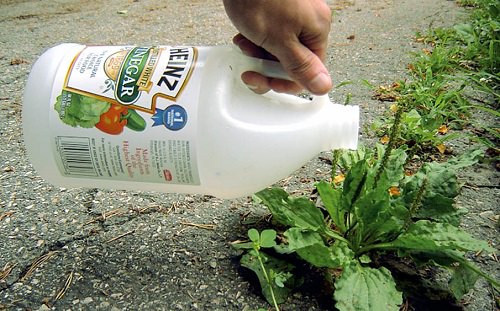
Did you know that vinegar can have a miraculous effect on the health of your plants? The vinegar in the garden deserves a mention for some of its highly effective uses. Often we do not know the exact properties and possibilities of the elements used every day, in the home and garden. Therefore, we resort to chemicals as the simplest form of problem solving. However, this is not always necessary. There is a natural product that can put an end to the problems among our plants. Vinegar is a natural, cheap, and effective solution.
Repelling flies, fruit flies and mosquitoes – Apple cider vinegar is a great trap for house flies, fruit flies and mosquitoes. How to make it? Easy enough. Ingredients: Half a cup of apple cider vinegar; A spoonful of molasses; ¼ cup of sugar; Glass of water. Mix everything in a bucket and hang it on a fruit tree or place it next to a bush. The small insects will quickly become trapped.
Fighting mold and pathogenic fungi – When plants are attacked by fungi, they grow less and dry faster. To fight the fungus, just mix 3 tablespoons of vinegar in a glass of chamomile tea and spray the plants.
Fertilizer for potted plants – Do you dream about healthy potted plants? It is much easier with vinegar. It is enough to mix two tablespoons of apple cider vinegar with 3 liters of water and water the flowers with the resulting preparation. The enhanced condition of the plants will be noticeable in a short time.
Removal of the weeds – Mix a glass of salt, 2 tablespoons dishwashing liquid, 1 tablespoon lemon juice and add to the apple cider vinegar bottle. Spray the weeds with the prepared mixture. It is especially effective in the case of weeds growing out of walls and pavements.
Scaring off the small animals – Cats, rabbits, moles, and other rodents often destroy our city. However, the smell of vinegar is really unpleasant for them, so they are easy to deal with. It is enough to soak a few rags with vinegar and arrange it in the garden.
Durability of cut flowers – Vinegar perfectly prolongs the life of cut flowers. When you bring your bouquet home, keep it in water with 2 tablespoons of vinegar and 1 tablespoon of sugar. The water should be changed every 3 days.
Removing Rust from Garden Tools – Simply put some diluted vinegar on tools, wait a few minutes and wash. Rust marks and any other dirt will disappear immediately.
Nutrition for Azaleas, Rhododendron and Gardenia – If you want to refresh, nourish, and accelerate the growth of these plants, water them once a week with a mixture of water and apple cider vinegar – add a glass of vinegar per liter of water and water the plant.
Faster plant germination – Apple cider vinegar also speeds up the germination of certain plants: e.g., Asparagus. The day before planting the seeds, rub them with sandpaper. The next morning, mix 125 ml of apple cider vinegar and 0.5 l of hot water. Soak the seeds in the mixture and plant them first thing in the morning.
Weed spraying – In early spring, gardeners spray the plot to get rid of pests and diseases. The specificity with the addition of vinegar will help get rid of insects and will not allow plant diseases to develop. In a bucket full of water (in a 10-liter bucket you need about 8 liters of water), mix two tablespoons of vinegar, three tablespoons of baking powder, two tablespoons of dissolved gray soap, two tablespoons of oil (preferably rapeseed oil). sprinkler and sprinkle it on the plants so hard that the liquid starts to drip off the leaves. Spraying is best done on warm, sunny days.
Acid soil method – When you plan to plant plants that like acidic soil, it can be “acidified” in a natural way. About three weeks before planting flowers or shrubs, it should be watered abundantly with vinegar-based water several times (8: 1 scale).
Weeds in concrete/ or between driveway tiles – Young weeds and grasses that grow in cracks or cracks in the concrete can be removed by sprinkling them or sprinkling them with vinegar. An alternative to chemicals is to prepare your own, natural, and definitely more ecological preparation. We mix vinegar with water in a 2: 1 ratio and spray all the weeds with the solution. For a better effect, we can repeat this treatment several times, using only vinegar. Do not use any salt solutions that may have a negative effect on the ground in the garden and the paving stones themselves.
Rabbit method – Rabbits do not like the smell of vinegar. This is why, when these animals are pests in the garden, the solution is to put in a few cups or containers of cotton wool soaked in quite a bit of vinegar. The cups need to be placed in several places along the beds where rabbits play most often. A day or two will pass and the rabbits will be gone.
Ants uninvited – Vinegar is an effective remedy for ants. Their paths must be sprayed with 10% vinegar, poured into the hand sprayer. These insects hate the smell of vinegar, so they will be forced to move.
A way for snails – Gardeners and farmers complaining about snail colonies should also use vinegar. You need to pour the same amount of vinegar into a liter of water and mix it, and then spray with a sprayer on the places where the mollusks appear. You can also prepare a kind of lure. Pour a little vinegar and a little beer into the old pot holder. The plate should be placed in the place where snails appear most often. Beer will attract snails with its smell, and vinegar will eliminate them.
The moths will no longer fly into the gazebo – This specificity is also a method for moths that fly into the cottage when the light is on. You need to mix two tablespoons of sugar (preferably brown) in a glass of water and add two more tablespoons of vinegar. Such liquid should be poured into a plastic bottle with a cut off top or a can with a lid cut out and placed near the lamp, but at the same time away from the open window. The scent will lure the moths into the bottle and not to the house through the windows.
Cleaner sandbox and garden furniture – The garden sandbox will be cleaner if you sprinkle the boards around it with water and vinegar or rub it with vinegar and let it dry. Neither insects nor cats like this smell, so they will not pollute the sandbox. Similarly, wash your garden furniture with water and vinegar. They will not be speckled with insects.
Shiny vases and flower pots -Vinegar helps to clean glass vases and ceramic pots. When there are stains and other marks difficult to remove with water and washing-up liquid, you can soak them in a sink filled with lukewarm water with the addition of vinegar. After an hour, the glass and ceramics will be shiny.
Cosmetic and personal use of vinegar:

When it comes to personal beauty, the regular white vinegar is much too harsh. The best one , that is helps maintain healthy skin is the Apple Cider Vinegar. Apple cider vinegar is one of the natural products that supports health, beauty and … the state of mind. It is called the beauty elixir for a reason. It is the perfect solution for beautiful skin and healthy, shiny hair. What are the properties of apple cider vinegar and why should you use it in your daily care? Check it out!
Instead of a shampoo – You can use it to wash your hair from time to time. It is most effective when combined with baking soda. Start by making a mixture of 3 teaspoons of white powder and 9 teaspoons of water, then apply it to your hair. Leave for 1-3 minutes and rinse with warm water. Now, apply the solution, prepared with apple cider vinegar and water in a ratio of 1: 4. To eliminate the intense smell, you can add a few drops of fragrance oil. Rinse with cool water after a few minutes. It will allow your hair to be smoother and brighter.
Mouthwash – Add 2 tablespoons of apple cider vinegar to a cup of water and rinse your mouth. This antibacterial mixture will eliminate germs such as for bad breath.
Face mask – Apple cider vinegar mixed in equal proportions with green clay can be used as a face mask. Such a home cosmetic has disinfecting and healing properties. It is best suited for oily and combination skin, as well as acne-prone skin. Keep on face for 10-15 minutes, then rinse with warm water.
As a deodorant – There are quite a few recipes for homemade deodorant. You can use for this, among others baking soda. However, apple cider vinegar is also suitable for the preparation of such a cosmetic. Rubbed under the armpits will neutralize the bad smell, although its smell is also not the most pleasant. However, it can be used in crisis situations.
For skin irritation and inflammation – People suffering from psoriasis say it helps soothe irritation. Moisten a cotton pad with a few drops of apple cider vinegar and rub it into the problem area. It is also useful in the care of dry skin, preventing blemishes and other blemishes.
When removing warts – Burning is the most common method of removing them. However, if you would like to get rid of warts using a home remedy, apply a cotton pad, previously dipped in apple cider vinegar, to it. Cover with a plaster and leave it overnight. If you repeat this activity for a week, you should notice the effects. However, remember not to nibble the skin when the wart dries up.
For foot care – Apple cider vinegar can be a godsend for pregnant women, runners and lovers of high heels or flip-flops. Pour one cup of vinegar into the bowl of water where you will soak your feet. It will get rid of pain, burning sensation and swelling, and also help you relax.
Apple cider vinegar prevents skin dehydration – It is worth mentioning that apple cider vinegar fights itchy and tight skin. It can be successfully used as a cleansing face tonic.
After sunbathing – If you have gone overboard with the sun and you feel the effects of excessive sunbathing in the evening or the next day, put a cloth moistened with apple cider vinegar on the burning skin. It will ease the pain and prevent (at least to some extent) the skin from peeling off.
Helps to rejuvenate the skin – Many women say that drinking a tablespoon of vinegar mixed with water helps to maintain a youthful appearance. However, applying vinegar directly to specific places on the body before going to sleep seems to be more effective in fighting the signs of aging and varicose veins.
Help fight dandruff and soothe itchy scalp – Natural acids, thanks to their antifungal properties. The rinse is also recommended for people with a tendency to oily hair. Apple cider vinegar removes sebum from the bulbs and inhibits the production of sebum. Before washing, it is worth rubbing vinegar diluted with water (in a ratio of 1: 4) into the hair and scalp and leave for 30 minutes. However, be moderate and do not use rubs and rinses more than twice a week. Excessive acidification of the hair can dry out the hair and irritate the scalp.
In the bath – The next time you pour water into the bathtub, add 1-2 cups of apple cider vinegar instead of the bath fluid you used so far. It will cleanse the skin of toxins, smooth it, and moisturize it. To improve the fragrance, you can also put a small amount of aromatic oil into the water.
An ally for weight loss – Apple cider vinegar supports the splitting of fats, which contributes to weight loss. It is worth combining it with a balanced diet and regular physical activity to achieve great results in a relatively short time. Apple cider vinegar improves digestion and suppresses the appetite.
